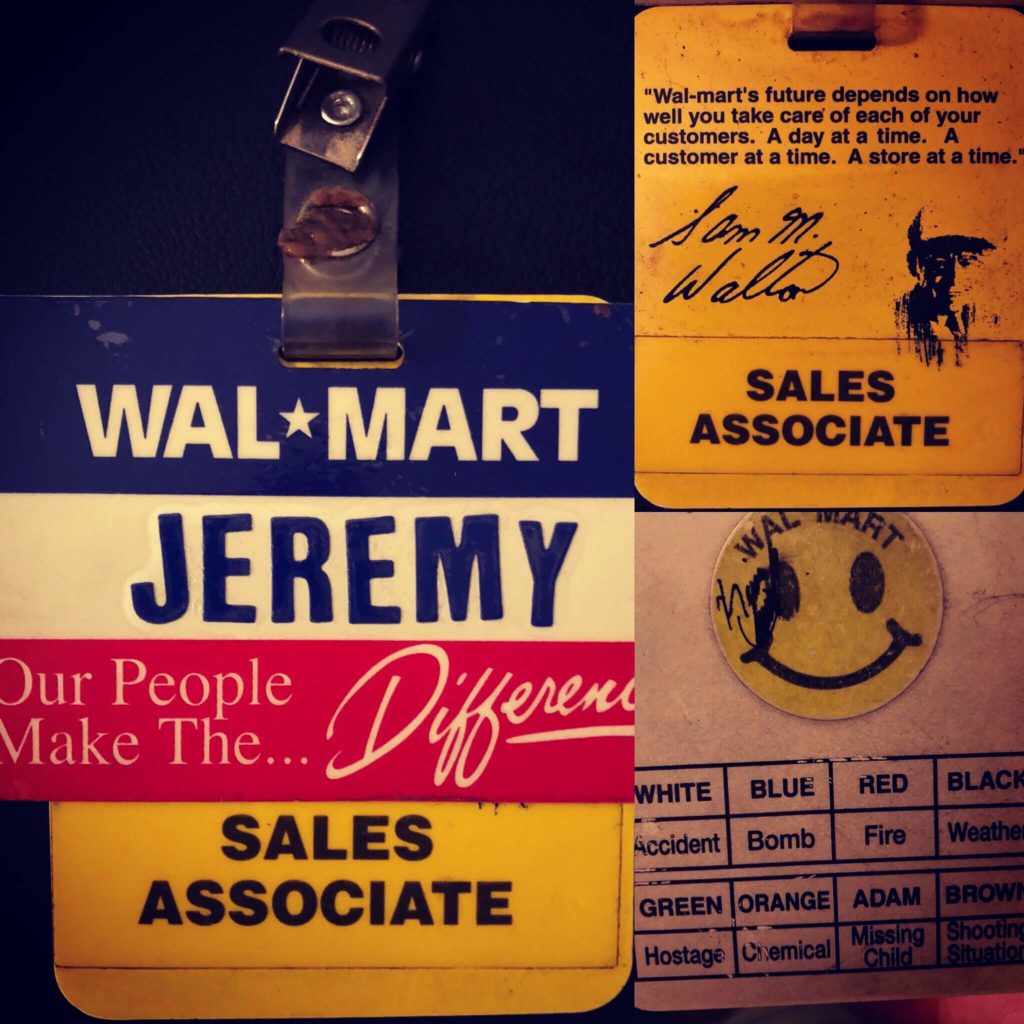When I was 17 years old, I worked in the Pet Department at a Walmart Supercenter in Kansas City, MO. I stocked cat-litter, dog-food, and sold goldfish in plastic bags to customers I knew I’d see the following week looking for a replacement “Goldie.”
During one particularly hot and humid Missouri summer month, I was repeatedly asked to go outside in the heat to “push carts” (gather all the shopping carts in the parking lot and bring them inside). The request for additional help outside was a fairly common thing to happen to sales floor associates like myself. However, there was a stretch that month when it happened almost every night.

Note: This was before the glory days of the automatic cart-pushing machine, so my long, skinny arms had to do all the work. In addition, this store’s carts were the heavy, over-sized, metal carts – not the small, lightweight plastic Target carts you see these days. Anyway, back to my story.
By The Book
I was happy to help, but we had a dress code which did not allow employees to wear shorts on the sales floor. So I would come in to work in khaki pants, then get asked to go outside in the heat and push a bunch of heavy carts around on the black asphalt parking lot.
After a few nights of this, I asked the Assistant Manager who kept calling me outside if I could wear shorts to work just in case I was asked to push carts again. He said, “No, you need to stick to the dress code.”
I was frustrated by this Assistant Manager’s “by-the-book” management style, so I mentioned it to my Department Manager. To put it plainly, I’ll just say my Department Manager was not happy.
The next night, I went to work with my pants on (as most do) and I got a call from the Assistant Manager. He apologized for making me go out in the heat to push carts without the proper attire. He told me if the temperature was hotter than 90 degrees, I could wear shorts to work, just in case they needed me outside. I told him thank you and hung up.
Come to find out later, my Department Manager had made a call to the Store Manager, who then called the Assistant Manager demanding he apologize to me for his bad judgment.
When my dad found out about this he said, “Son, you should be grateful for working with that team. It’s extremely rare for someone above your pay scale to apologize to you and admit they were wrong.”
At the time, I was simply happy to wear shorts for my next shift. I didn’t realize the long-term impact that day would have on me. At such a young age, I was exposed to a simple, yet powerful tool for building a healthy company culture – an apology.
A Culture of Responsibility
It’s not cool to admit we are wrong. It’s not easy either. We’re afraid we’ll be exposed as a fraud. We hide behind the one thing we think we have going for us – being right all the time. But inside we know we are wrong much of the time.
In the time since that day at Walmart when my Assistant Manager apologized to me, I have been blessed to have worked at a non-profit that encouraged and accepted the practice of “admitting when you are wrong.” But I know this is not the norm, particularly in the for-profit business world.
How do we create a culture of taking responsibility for our actions? How do we encourage our team members to admit they screwed up?
We lead by example. We say we’re sorry and admit we’ve screwed up – publicly and privately.
Another way to build a culture of responsibility is to lead by asking others to apologize.
For example, if someone else was wrong or does something inappropriate, ask them to apologize to those affected. If it was a public offense, ask them to apologize in public. If it was a private offense, make sure they address it privately.
Action Item
One of the most crucial partnerships in your office is your relationship with your assistant. So in your next 1:1 meeting with your assistant, apologize for what you need to apologize for. Let them know you want to build a culture of responsibility. Encourage them not to be afraid to make mistakes, and let them know you value open communication more than “being right all the time.”
Admitting you’re wrong is not easy, but it is a necessary skill to master if you want to be an impactful leader who builds a healthy culture in your workplace.
Who do you need to apologize to?
Seek them out ASAP and admit you were wrong. The longer you wait, the more difficult it will be.
—
P.S. – I want to hear from you! Connect with me on LinkedIn and send me a note about a time you had to admit you were wrong, or how someone else apologized to you and what impact that had on your workplace.





